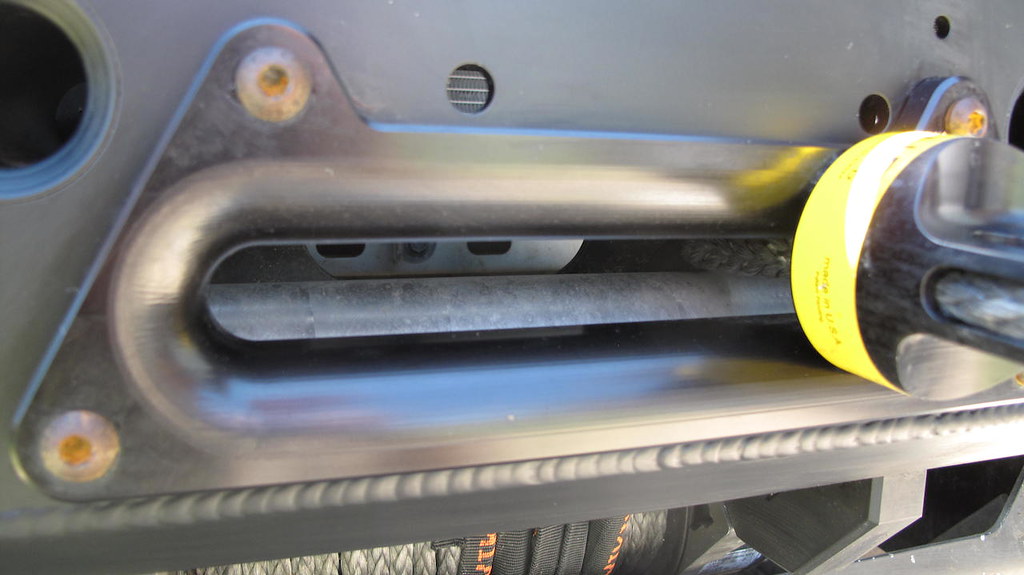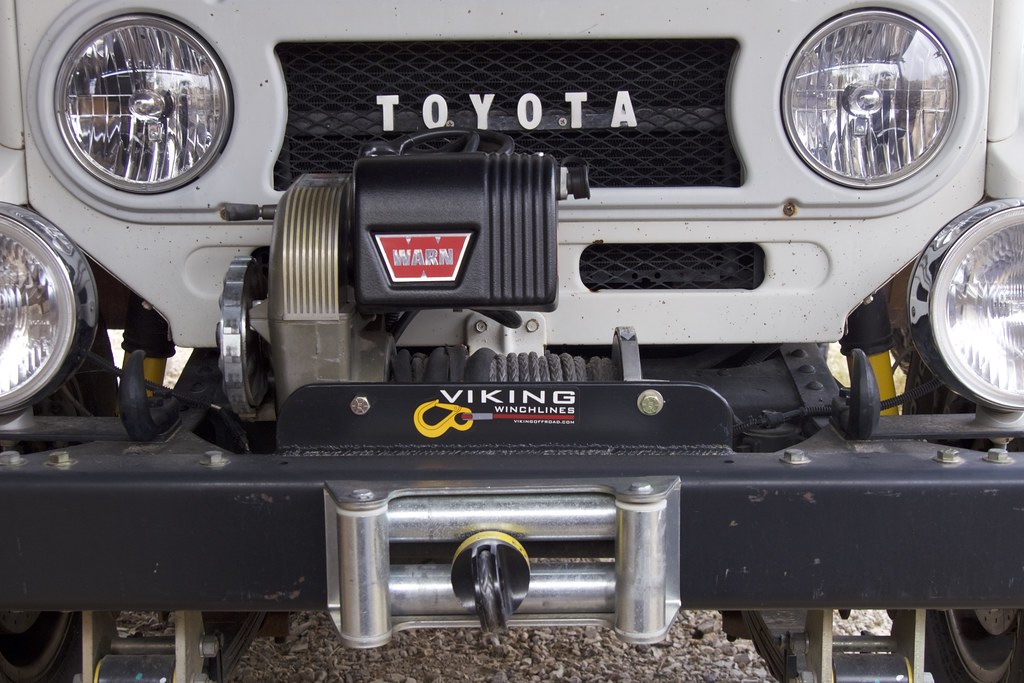Once upon a time, adding a winch to an overland vehicle was easy. Series 2 and 3 Land Rovers, 40-Series Land Cruisers, and Jeeps were built with chassis rails that extended a good foot in front of the radiator, fronted by a solid steel bumper. To mount a winch you basically plopped it there, bolted it down, and hooked up either a PTO driveshaft or wiring. Done. Even the bulky Warn 8274 on my FJ40 was an easy installation.
It’s different these days. With scant few exceptions, those protruding steel bumpers have been sacrificed in the (commendable) search for aerodynamics—i.e. fuel economy—and safety, via computer-designed crush zones and air bags. Give me a choice of being in the 40 or our Tacoma in a head-on collision and there’s no doubt which I’d choose.
But if you want to install a winch on these new vehicles, you need to replace the 10-pound body-colored plastic facade that looks like a bumper with a dedicated steel or aluminum structure properly connected to the chassis of the truck, and capable of absorbing several tons of force. Thankfully, numerous companies have risen to the challenge, especially for the more popular models of pickup and SUV.
However—I seem to be noticing a trend in aftermarket winch bumpers that is vaguely unsettling: a trend toward fashion over function. That 8274 on my FJ40 is right out in the open—I can see it operating, I can watch to make sure the line is spooling correctly, and if it isn’t I can stop the procedure and fix it. One of the requirements to pass the winching section in the N.P.T.C. Certificate of Competence in 4WD is, “Ensure the winch components are in suitable condition.” Another is, “Ensure the winch is free from obstruction and the line is spooled properly.” Both are easy to confirm with that 8274.
With an increasing number of modern winch bumpers, either is virtually impossible. The only view of either the winch or the drum and line is a peek through the fairlead. A tiny hole gives you access to the engagement lever. Recently I was respooling line on a student’s winch and had to have him shine a flashlight through the fairlead while I crouched in front of it and peered inside so I could ensure the line was going in correctly. Had there been a bad snarl we would literally have had to remove the bumper to fix it.
Anther vital winch-bumper component is either shrinking or going away altogether—recovery points capable of and suitable for attaching a shackle. Properly, a shackle eye should be nearly as thick as the width of the jaw on a shackle, to prevent twisting and off-angle stresses. Lately I’m seeing them much narrower—or simply missing, so that there is no provided way to rig a double-line pull from your winch to an anchor point and back to your bumper, or to safely secure a friend’s winch line to your vehicle.
Several months ago I spoke to a rep from a major bumper manufacturer (I’m not going to name names in this piece because I’m not discussing quality, which is uniformly high in this segment; I’m discussing choices made by the manufacturer and consumer). The rep said that recovery points had been eliminated on his company’s bumpers due to airbag compatibility issues. I’m . . . not sure about this. It’s my understanding that airbags are triggered by accelerometers, which detect deceleration consistent with that of a collision severe enough to warrant deployment, and then send a trigger signal to the device. Often these accelerometers are positioned in the cab of the vehicle, nowhere near the bumper. In any case, if you make a bumper capable of withstanding several tons of pull provided by the winch mounted on it without affecting airbag deployment, I can’t understand why adding recovery points capable of withstanding several tons of pull would suddenly compromise the system. (Note that I did not say it can’t be so; I simply said I don’t understand how it could be so.)
One source I spoke to told me that the only thing separating airbag-compliant winch bumpers from non-airbag-compliant winch bumpers is that the maker of the latter did not spend the huge amount of money necessary to actually conduct crash tests to prove unequivocally that the vehicle’s airbag will still deploy with the bumper mounted. In researching various crash reports I have yet to come across a case in which it was proven that an aftermarket bumper prevented an airbag from deploying (if anyone reading this has such documentation I’d be grateful to hear about it).
The only potential effect of a winch bumper on airbag deployment that I know of is the risk of triggering in a collision that occurs at a lower speed than that at which the accelerometer would normally trigger the device. Some vehicles are built with crush cans behind the stock bumper, designed to absorb the energy in a minor collision without setting off the airbag. An aftermarket bumper that eliminated these crush cans and tied directly to the frame could potentially fool the carefully calibrated sensors into “thinking” that the crash was worse than it actually was. This would certainly be an alarming (and probably expensive) surprise, but one unlikely to cause serious injury.
I’d like to see—within the boundaries of passenger protection in a collision, of course—a return to winch bumpers that optimize access and safety for the winch operator. Winching is an activity fraught with potential risks at the best of times; deliberately making it difficult or impossible to ensure the winch is operating correctly is a big mistake. At the very least, a bumper should be equipped with a removable access port that allows full-width access to the drum and line. And the bumper needs to be equipped with proper recovery points that will adequately support a shackle—either that or the manufacturer could offer separate, frame-mounted recovery points.
There’s nothing wrong with fashion, as long as it does not compromise function. The best functional designs make their own fashion—what can be better looking than something that works perfectly?








